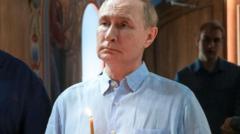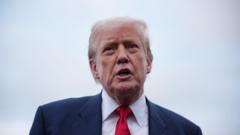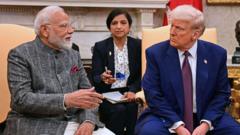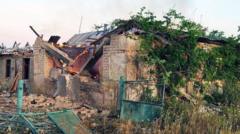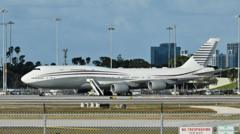The project is expected to enhance the venue for official events and modernize the East Wing by late 2028.
White House Announces Ambitious $200 Million Ballroom Project
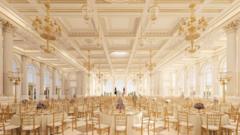
White House Announces Ambitious $200 Million Ballroom Project
New plans reveal the White House’s intention to build a grand ballroom, fulfilling a longstanding dream of President Trump.
The White House has officially unveiled plans to construct a lavish new ballroom at a cost of $200 million, an initiative long championed by President Donald Trump. Set to be built alongside a renovated East Wing of the White House, which currently contains the offices for First Lady Melania Trump and other significant staff, the new ballroom will accommodate around 650 guests. Funding will come from Trump himself and other undisclosed contributors, with construction anticipated to commence in September, as confirmed by Press Secretary Karoline Leavitt.
The current East Room, traditionally utilized for major White House events, can only seat approximately 200 individuals. Leavitt emphasized that the upcoming ballroom would eliminate the necessity of erecting large tents on the South Lawn for significant events that often host world leaders, describing it as a "much needed" and "exquisite addition" to the historic residence. Completion is projected for well before the end of Trump’s term in January 2029.
Chief of Staff Susie Wiles noted the administration's commitment to preserving the White House's historical significance while creating a ballroom that would endure through future eras. Leslie Greene Bowman, who has served under several presidents on the Committee for the Preservation of the White House, expressed hopes that modifications will respect the structure's storied past.
Renderings of the new ballroom indicate it will mirror the White House’s architectural style, boasting a luxurious interior complete with chandeliers and ornate columns. Facilities currently located in the East Wing, including the First Lady's office, will be temporarily relocated during construction.
Throughout his presidency, Trump has consistently advocated for a new ballroom, pointing to prior inconveniences from utilizing tents for events. He humorously lamented the past efforts to create a suitable venue and has frequently expressed confidence in his ability to oversee the construction of a spectacular ballroom. This project follows previous renovations, including new flagpoles and decorations within the Oval Office, marking a period of significant transformation at the White House.
The current East Room, traditionally utilized for major White House events, can only seat approximately 200 individuals. Leavitt emphasized that the upcoming ballroom would eliminate the necessity of erecting large tents on the South Lawn for significant events that often host world leaders, describing it as a "much needed" and "exquisite addition" to the historic residence. Completion is projected for well before the end of Trump’s term in January 2029.
Chief of Staff Susie Wiles noted the administration's commitment to preserving the White House's historical significance while creating a ballroom that would endure through future eras. Leslie Greene Bowman, who has served under several presidents on the Committee for the Preservation of the White House, expressed hopes that modifications will respect the structure's storied past.
Renderings of the new ballroom indicate it will mirror the White House’s architectural style, boasting a luxurious interior complete with chandeliers and ornate columns. Facilities currently located in the East Wing, including the First Lady's office, will be temporarily relocated during construction.
Throughout his presidency, Trump has consistently advocated for a new ballroom, pointing to prior inconveniences from utilizing tents for events. He humorously lamented the past efforts to create a suitable venue and has frequently expressed confidence in his ability to oversee the construction of a spectacular ballroom. This project follows previous renovations, including new flagpoles and decorations within the Oval Office, marking a period of significant transformation at the White House.


